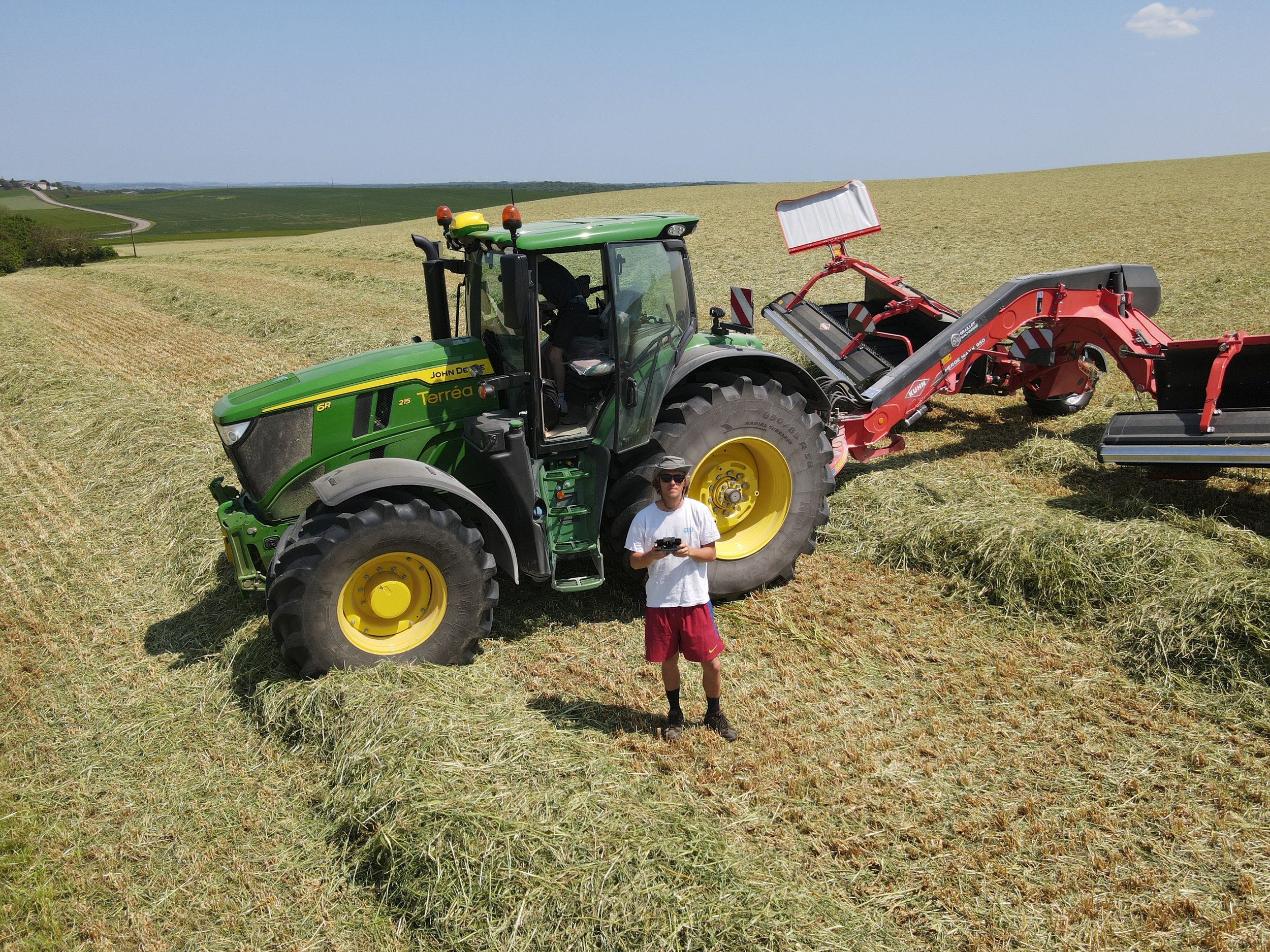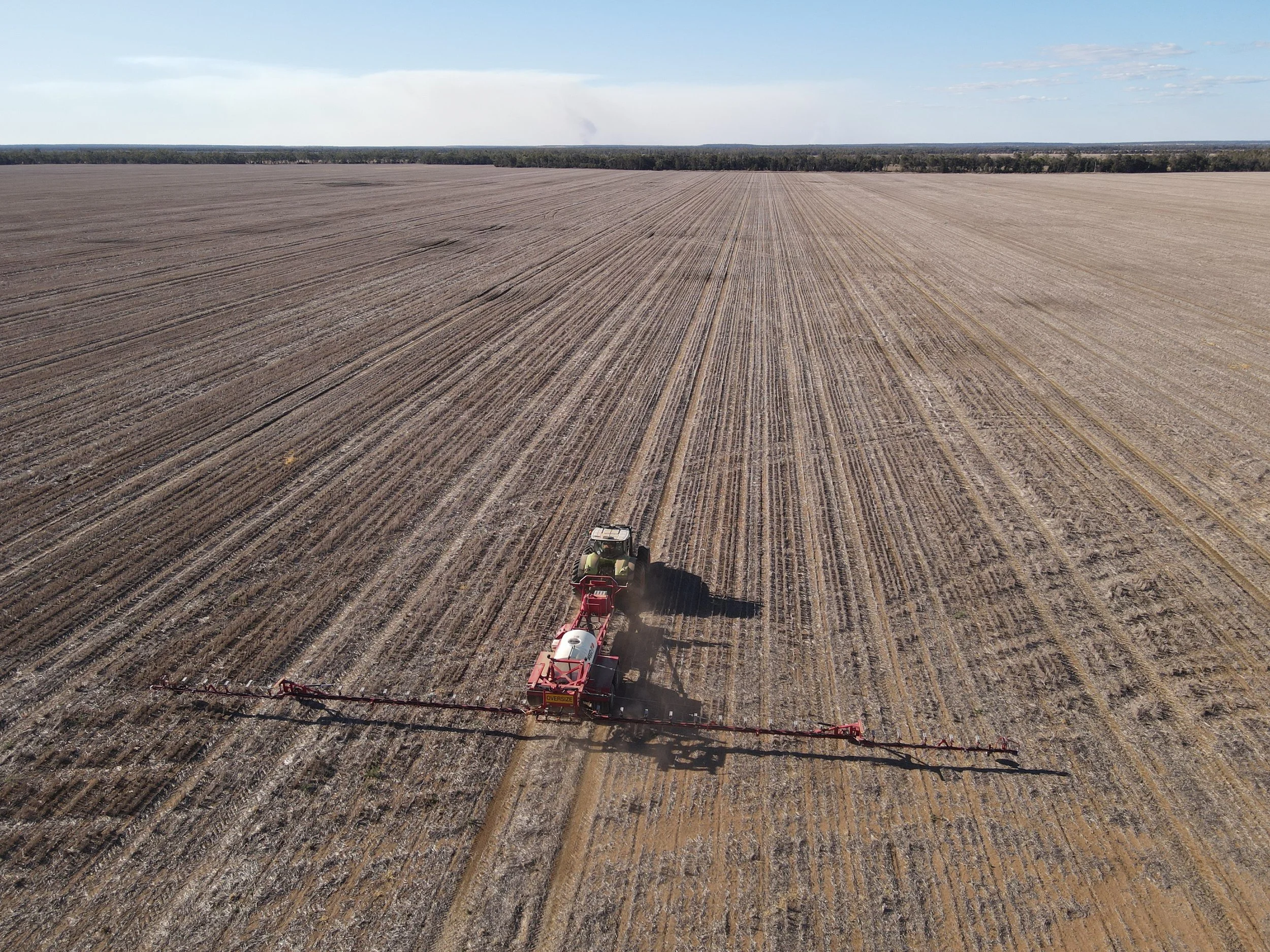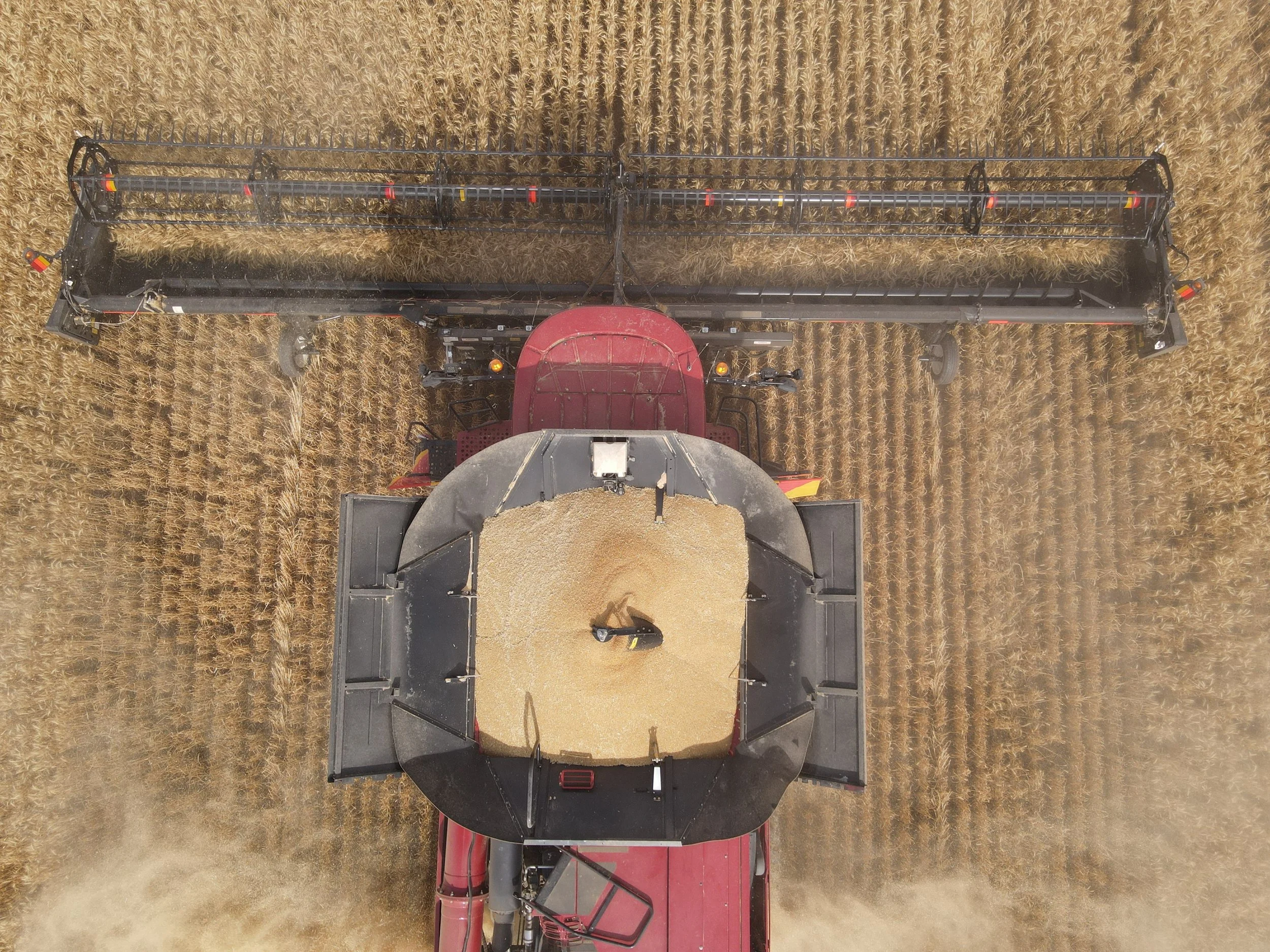EP4/7 : The road to successful development of an AgTech solution
Maximize the return on investment (ROI) of your AgTech solutions !
Investing in new technology isn’t just a trend—it’s a strategic decision that must bring tangible returns, especially in agriculture, where every tool and machine plays a critical role in the bottom line. For many farmers, including myself, this means that when I consider a new, more expensive technology, it must deliver a strong return on investment (ROI) in terms of saved energy, increased productivity, or operational efficiency. Simply put, if a product is 20% more expensive but only boosts productivity by 2%, it isn’t worth the investment.
In this episode, I’ll explore how advanced AgTech solutions drive ROI through several key factors that every farmer should consider before investing. From reducing operational costs to boosting productivity, AgTech offers powerful tools that can transform daily operations and deliver strong financial returns when deployed effectively.
👀 Previous episode (Episode 3/7): MAKING A SUCCESS OF YOUR FIRST PILOT PROJECTS WITH FARMERS: A KEY STAGE IN LAUNCHING A NEW PRODUCT
Founded in 2022, AgTech Market specializes in bridging the gap between agricultural innovation and real-world application. We help agricultural machinery manufacturers adapt to evolving AgTech trends by providing tailored support, from market analysis to product development and go-to-market strategies. Our mission is to make AgTech solutions accessible and effective, driving the adoption of technologies that truly meet the needs of farmers and manufacturers alike. Discover how AgTech Market's can help you.
Balancing ROI and the Real Needs of Farming Operations
As a farmer, every major investment I make must yield a strong return. Agriculture operates on thin margins, so when considering new technology, it’s not just about what the product promises to do but how it will tangibly affect my operation. I’ve seen firsthand the challenges of adopting costly innovations that don’t deliver meaningful improvements in productivity or efficiency.
A Clear ROI Example: The Belt Hay merger
One personal example is when I invested in a belt hay merger for my forage operation. The belt merger was more than double the price of a standard rotary merger, which is typically around €30,000. For many farmers, the price alone is a deterrent, especially for a relatively unknown piece of equipment. However, I knew that traditional merging methods were slowing my operation and limiting my acreage potential. The belt merger allowed me to increase productivity by 2.5 times, expand our hay acreage by 250%, and improve the quality of the forage thanks to its gentler handling of plants. This investment fundamentally changed our approach to harvesting, allowing us to streamline processes and increase output—thus delivering a clear ROI that justified the initial cost.
This experience reinforced for me a crucial lesson: an innovative product must prove its value in real terms—higher efficiency, cost savings, more comfort or yield improvements. Without these tangible returns, even the most advanced technology isn’t worth the investment.
2023 hay season with the new KUHN Merge Maxx (Youtube)
Investments Without Direct ROI: Why We Buy New Tractors
Not all agricultural investments hinge on immediate ROI—tractors are a prime example. For many farmers, regularly upgrading to newer tractor models isn’t driven by a substantial increase in productivity but by other rational, low-risk needs. New tractors bring several financial and operational benefits, including fewer repairs, which minimizes downtime during critical work periods. There’s also the advantage of depreciation, allowing farmers to deduct the asset’s value over time, offsetting some of the investment costs.
Additionally, while the operational gains may be modest, new tractors improve operator comfort and reduce fatigue, especially during long hours in the field. These purchases are relatively low-risk compared to untested innovations; tractors are well-understood tools that will retain a good resale value in five years or more. Even though the ROI may not be immediately visible in terms of increased yields or revenue, new tractors provide stability and reliability, essential for maintaining steady productivity on the farm. This calculated investment may not be free, especially with the increased prices over the last 10 years, nor will it drastically change operations, but it supports a seamless workflow and predictable asset management, making it a practical and strategic choice.
A No-Go Decision: The ROI of Targeted Spraying
This year, as we prepared to renew our 10-year-old sprayer, previously equipped with section control, we took the opportunity to explore the latest available features, hoping to identify options that would provide the best return. Among these innovations was targeted spraying, a breakthrough in broadacre agriculture, especially in regions like Australia where herbicide costs are high, and the potential savings are substantial. However, as we began evaluating its applicability to our 250 hectares, several questions and challenges arose.
With annual phytosanitary expenses around €35,000—about €20,000 of which is spent on herbicides—we needed a realistic estimate of how much we could reduce these costs with targeted spraying. The system’s potential to recognize and spray only the areas with weeds seemed ideal but remained hard to quantify accurately. Additionally, investing in such advanced technology offered no guarantee of added resale value when we eventually replace the sprayer. This type of precision technology is not yet fully reliable in environments like ours, where weed density can be high and periods of bare soil are brief.
Ultimately, we opted for upgrades that would improve precision and efficiency while being simpler, more affordable, and proven, such as section-by-section control and automatic boom height adjustment on slopes. These features provide more immediate and reliable benefits, aligning with our current scale and operational needs. We plan to revisit our calculations for targeted spraying when the technology becomes more cost-effective or if our farming area expands, making it easier to justify the investment.
This decision reinforced the importance of ROI in assessing new technology. Advanced features must demonstrate tangible value, especially in environments where the benefits are not yet fully proven or easily amortized over smaller operations.
CLAAS AXION with Cropland & WEED-It spot spraying system, Australia 2023
Focusing on ROI: A Guide for AgTech products to Drive Value for Farmers
In the agricultural sector, where tight budgets and narrow margins are the norm, ROI is a crucial factor in decision-making. Unlike other industries where innovations might be adopted based on cutting-edge appeal, farmers need clear evidence that a product will contribute directly to profitability. For AgTech companies, ensuring their products deliver on this promise is key to adoption and long-term success. Here’s why ROI is particularly important for innovative agricultural products:
Conduct Thorough Market Research to Identify High-ROI Opportunities
A solid market study (like explain in Episode 1) allows manufacturers to identify areas where their product can generate the most ROI. To ensure maximum value:
Identify the Right Market Segment: Determine which farms will benefit most from your technology, whether they’re large-scale operations or those facing high input costs.
Tailor Features to Real Needs: Analyze the specific needs of each segment to prioritize features that add measurable value. Understanding what farmers truly need can streamline your product’s design and make it more impactful. (Explained in Episode 2)
Consider Entry Pricing: Launching with an attractive price for early adopters can increase initial adoption, allowing farmers to see ROI firsthand. Once the technology is proven, prices can be adjusted to better align with the benefits the product provides.
Maximize Machine Utility Across Acres, Passages, and Tasks
One of the fastest ways to boost a machine’s ROI is by increasing its operational versatility, allowing it to cover more acres or perform multiple functions:
Optimize for Multi-Tasking: Design machines to support multiple tasks, making them applicable across different operations (e.g., tilling and weeding) and crop types.
Extend Product Lifespan Through Passages: Technologies that are robust enough to be used multiple times per season improve ROI, as they reduce costs across each usage cycle.
Design for High-Capacity Operations: Machines that can cover more ground per hour increase productivity, especially on larger farms, providing higher value over time. For smaller farms, modular or scalable models that fit varying acreage sizes are valuable.
Target Customers with the Most Potential for ROI first
Manufacturers should focus on farms where the technology’s benefits are most impactful, such as:
Large-Scale Operations: Larger farms often have bigger operations, making them ideal for technologies that can deliver substantial savings and productivity boosts.
High-Cost Farms: Targeting farms with elevated input costs or labor shortages can highlight your product’s cost-saving potential, demonstrating a clear path to ROI.
Subsidized Projects: Many farmers are eligible for regional or national subsidies, especially in Europe. Ensure your product qualifies for these programs, as they can reduce the upfront costs for farmers, making the ROI more attractive.
Build Success Stories with Early Users
Creating success stories with initial users is essential for building credibility and proving ROI to potential customers. Here’s how early partnerships can drive trust and adoption:
Generate Real-World Feedback: Early pilot projects allow manufacturers to gather critical on-the-ground insights, helping refine the product and demonstrating its value directly in the field. (See Episode 3)
Gain Testimonials: Partnering with initial users provides valuable testimonials, showing tangible benefits and building trust in the technology. These success stories can help reassure farmers about the potential ROI and ease concerns about adopting new technology.
Collaborate with Research Organizations: Working with universities, agricultural organizations, or research institutions to conduct studies can further validate the product’s impact. Quantifying agronomic benefits and cost savings through independent analysis adds credibility.
Leverage Third-Party Endorsements: Verified results and endorsements from trusted organizations boost the product’s reputation, making ROI claims more compelling. These independent stamps of approval serve as powerful incentives, accelerating adoption and building long-term trust among potential users.
Leverage Subsidies and Grants as ROI Catalysts
Subsidies and grants can significantly accelerate ROI for farmers, making it easier to justify the investment. AgTech manufacturers can support their customers by:
Building Knowledge on Funding Opportunities: Staying informed about regional and EU subsidy programs helps manufacturers advise farmers on eligibility for financial support.
Designing for Sustainability Criteria: Many grants prioritize sustainable practices; building your product to align with environmental standards can make it eligible for additional funding.
Applying for Calls for Projects: Participate in calls for projects, which can provide direct funding or financial support for innovative AgTech solutions. Securing a subsidy or grant can serve as a powerful incentive for farmers and reduce their payback period.
By following these strategies, AgTech solutions can optimize the ROI of their products, making them more attractive to farmers and encouraging broader adoption. Helping farmers achieve meaningful financial returns through AgTech is essential for long-term success and trust in innovative solutions.
How Carbon Robotics’ $1.6M LaserWeeder, the World’s Most Expensive Farm Machine, Achieves Rapid ROI⚡🌱
Carbon Robotics has strategically positioned its LaserWeeder as a high-cost yet high-ROI solution for modern agriculture. The company’s approach ensures that, despite its substantial initial price (up to $1.6 million), farmers can justify the investment due to significant savings and productivity gains.
Using the machine at Braga Fresh
At Braga Fresh, Carbon Robotics deployed two LaserWeeders, each covering approximately 2,350 acres annually across high-density organic crops like spinach, cilantro, arugula, and baby kale. With each machine running 18 hours a day, six days a week (5,600 hours per year), Braga Fresh achieved a productivity rate of about 0.8 acres per hour, significantly boosting weeding efficiency. The LaserWeeder’s five-year depreciation schedule and upfront cost of $1.2 million (pre-series price) translate to $102/acre annually. Including additional costs for two operators, fuel, Over-the-Air (OTA) service, and logistics, the total weeding cost per acre comes to $268/ac per pass.
A Solution Centered on Cost-Effectiveness and Strategic Fit
The LaserWeeder was engineered to address one of the most pressing challenges for farmers: the rising cost and scarcity of manual labor, especially in organic farming where chemical weed control is not an option. For example, at Braga Fresh, manual weeding once required three teams of 25 workers, costing approximately $900 per acre. With the adoption of the LaserWeeder, their per-acre cost dropped to $550 ($268/ac for the laser + $282/ac for hand crews), resulting in net savings of around $350 per acre. This investment replaced the previous full hand-weeding cost of $900 per acre, saving $350 per acre. This shift not only reduced labor dependency but also cut weeding costs by approximately 40%, showcasing how strategic deployment of innovative machinery can yield substantial returns.
A two years pay back period !
For Braga Fresh, the LaserWeeder’s investment of $1.2 million was justified by its rapid payback period, achieved within just two years. Here’s how:
Annual Cost Savings: Before the LaserWeeder, Braga Fresh’s weeding costs were approximately $900 per acreusing manual labor. With the LaserWeeder, these costs were reduced to $550 per acre, resulting in savings of $350 per acre.
Total Annual Savings: Each LaserWeeder covers 2,350 acres per year, leading to an annual savings per machine of $822,500 (2,350 acres * $350 in savings per acre).
Payback Calculation: With annual savings of $822,500, the $1.2 million investment is paid back in just under two years, making the LaserWeeder a sound investment for Braga Fresh in terms of both efficiency and cost-effectiveness.
This swift return highlights the value of investing in high-efficiency AgTech for large-scale operations, as it can rapidly offset initial costs and drive long-term savings. Even at its current price of $1.6 million, the LaserWeeder remains a worthwhile investment for large-scale farms like Braga Fresh, achieving payback within just two years thanks to significant labor savings and operational efficiencies.
Long-Term Savings and Strategic Value
From the perspective of a farmer like Braga Fresh, the long-term benefits of the LaserWeeder extend well beyond its initial two-year payback period. Over a five-year depreciation schedule, the machine’s substantial cost reduction—lowering weeding expenses by 40%—translates into significant savings on Braga Fresh’s most labor-intensive crops, such as leafy greens and potentially new additions like carrots. With these savings, the farmer effectively offsets the $1.6 million investment, generating positive returns, $3 millions within five years through both direct labor cost reductions and streamlined operations.
The machine has also prompted Braga Fresh to rethink production strategies, allowing for reduced dependency on seasonal labor and offering more predictable, consistent results. Equipped with the LaserWeeder, Braga Fresh can broaden its crop selection to high-value, labor-intensive crops, like carrots, thanks to the machine’s precision and reliability. In adapting their weeding strategy around the LaserWeeder, Braga Fresh now benefits from predictable, lower weeding costs, more flexible crop management, and an improved competitive edge in organic and specialty markets.
This strategy showcases how Carbon Robotics designed the LaserWeeder to be not just a premium product but a vital component of a farm’s long-term weed management strategy, ensuring that even significant investments are profitable and aligned with modern agricultural needs.
Carbon robotics’s Laser Weeder at Braga Fresh, California
Key Takeaways from Episode 4:
Balancing ROI and Real Needs: For farmers, every investment must deliver a meaningful return. Whether through productivity, cost savings, or comfort, new technologies must demonstrate clear ROI to justify their cost, especially in a field with tight profit margins.
Guiding AgTech Products to Drive Value: AgTech manufacturers can enhance ROI by conducting thorough market research, targeting high-need customers, and creating versatile products that maximize utility. Early user success stories and third-party endorsements further build credibility and adoption.
Carbon Robotics’ LaserWeeder Success: The $1.6M LaserWeeder has proven profitable by addressing specific needs, reducing weeding costs by 40%, and offering a rapid two-year payback period. This case study highlights how strategic, high-cost technology can transform operational costs and create long-term value for large-scale farms.
👀 Next Episode (Episode 5/7) : Building a Successful Distribution Network for AgTech Machinery: Strategies for Partnering Effectively
Are you struggling to develop your product in the AgTech market? Let’s talk! I can help you analyze your market and develop a clear strategy. Contact me on LinkedIn or organize a meeting here ⬇️
THE ROAD TO SUCCESSFUL DEVELOPMENT OF AN AGTECH SOLUTION
Ep 0/7 : IS THE AGTECH INDUSTRY IN CRISIS ?
Ep 1/7 : HOW TO SUCCESSFULLY POSITION YOUR PRODUCT IN THE AGRICULTURAL MARKET?
Ep 2/7 : HOW TO ADAPT YOUR AGRICULTURAL MACHINES TO MARKET AND CUSTOMER NEEDS?
Ep 3/7 : MAKING A SUCCESS OF YOUR FIRST PILOT PROJECTS WITH FARMERS
Ep 4/7 : MAXIMIZE THE RETURN ON INVESTMENT (ROI) OF YOUR AGTECH SOLUTIONS !
Ep 6/7 : OPTIMIZING PRODUCT SCALING THROUGH FINAL USER FEEDBACK
Want to learn more about Agtech opportunities ?
AMERICAN MARKET - 🇺🇸
AUSTRALIAN MARKET - 🇦🇺
CALIFORNIAN MARKET - 🇺🇸
CANADIAN MARKET - 🇨🇦
EUROPEAN MARKET - 🇪🇺
FRENCH MARKET - 🇫🇷





